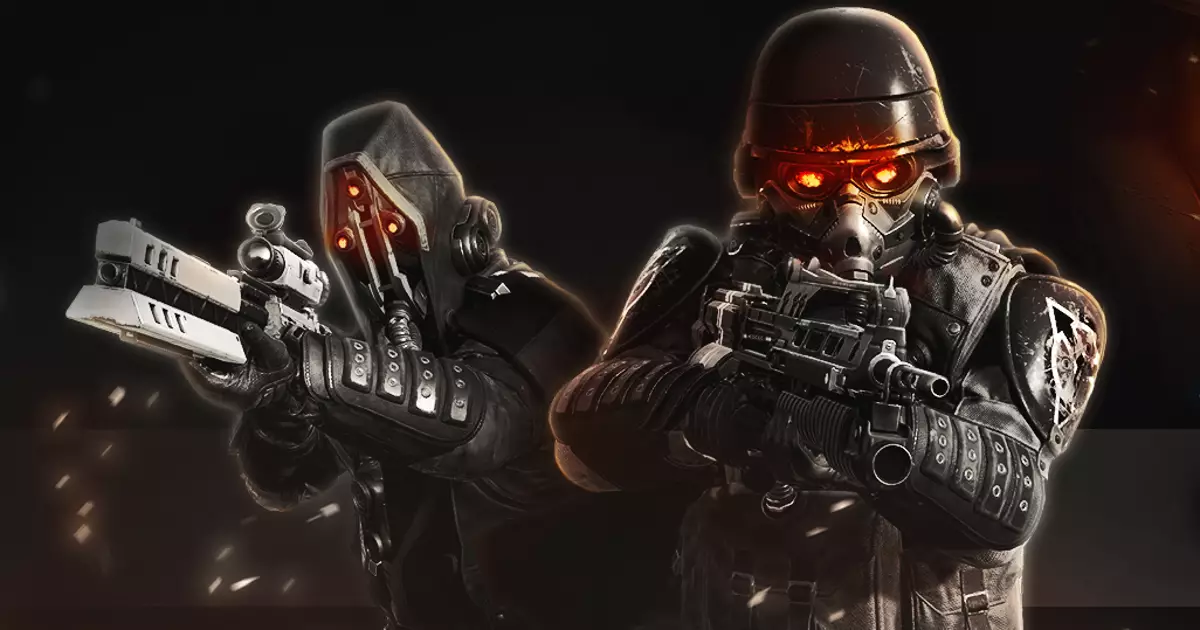The gaming landscape is often a theater of strange alliances and unexpected collaborations, yet the recent announcement of a crossover between Helldivers 2 and the Killzone franchise is a striking illustration of this phenomenon. This pairing, while baffling at first glance, reveals a deeper interplay between themes of war, consumerism, and political commentary in the gaming sector. What seems to be a mere addition of cosmetics and weapons transforms into a dialogue about the ideologies within these two franchises, representing a unique moment that deserves critical examination.
Arrowhead Games, developers of the satirical cooperative shooter Helldivers 2, have positioned themselves in a peculiar niche of gaming. The franchise is designed as a stark commentary on militarism and the absurdity often associated with conflict, presenting a universe where players engage in “liberating” hostile alien worlds on behalf of Super Earth—a not-so-subtle parody of global imperialism. By contrast, Killzone, birthed from the ambitions of Sony and Guerrilla Games, presents itself in a more traditional, albeit grimdark, framework of military shooters. This historic series gained notoriety as a competitor to iconic titles like Halo, embedding itself within the minds of gamers as a prominent FPS series.
The crossover arises from an environment where these two drastically different narratives collide. The addition of Killzone weapons and cosmetics into Helldivers 2 not only symbolizes a commercial endeavor but also hints at intrinsic criticisms of the gaming industry’s reliance on nostalgia and marketable militaristic aesthetics. Players may purchase themed gear reminiscent of Killzone’s stormtroopers, yet this act shifts focus from gameplay to an almost transactional appreciation of the franchises’ legacies.
Despite the initial excitement surrounding the crossover, players have voiced concerns regarding its implications. While many gamers are eager to welcome new content, the pricing strategies associated with this addition have elicited skepticism. The discourse within the Helldivers community has highlighted a growing discontent regarding the commercialization of core gameplay elements—specifically, the notion of integrating primary weapons as downloadable content (DLC). This leads to an underlying question: Does this pricing model erode the value of player skill and contribution within the game, transforming it into a pay-to-win narrative?
As the crossover evolves, players also look forward to a potential Killzone-themed reward linked to the ongoing Galactic War. This is yet another layer that intertwines gameplay and community engagement, blurring the lines between cooperative efforts and competition—a tactic that could either strengthen community ties or exacerbate divisions among players depending on their financial willingness to engage with the extra content.
At the heart of this alliance is a satirical undertone that cannot be overlooked. Helldivers thrives on parody, poking fun at militaristic propaganda while simultaneously catering to an audience drawn to the very features it critiques. The introduction of Killzone’s militaristic gear and branding into this context forces players to confront their own complicity in consuming these narratives. The question arises: Are we truly observers of such a critique, or are we participants in their farcical reconstitution?
The lore that accompanies both franchises echoes significant historical wars, albeit adorned with science fiction embellishments. The juxtaposition of Helldivers’ facetious liberation ethos against the earnestness of Killzone’s narrative showcases a commentary on the bloodshed often romanticized in video games. This raises consciousness among players about their relationship with military themes—a topic that frequently gets overshadowed by adrenaline and excitement.
A Future of Ambivalence
As Arrowhead Games expresses aspirations for further collaborations within Helldivers 2, it invites both enthusiasm and skepticism. This encounter with Killzone offers a fleeting glimpse of what lies ahead in the gaming industry: a trend where nostalgia and critique intermingle in the quest for commercial success. Whether this fusion will invigorate the gaming community or lead to further disillusionment remains contingent upon player reception and evaluation of the underlying messages in these collaborations.
The Helldivers 2 and Killzone crossover illustrates the complex interplay between game content and player engagement. Far from being a straightforward partnership, it invites discourse on the implications of violent narratives within a gaming culture that both critiques and celebrates militaristic aesthetics. As players don the masks of Killzone’s stormtroopers, they must reckon with the multilayered commentary that lies at the intersection of entertainment and ideology. The future of such partnerships beckons a critical eye—a lens that could either deepen appreciation for the art form or question the very foundations upon which it stands.

